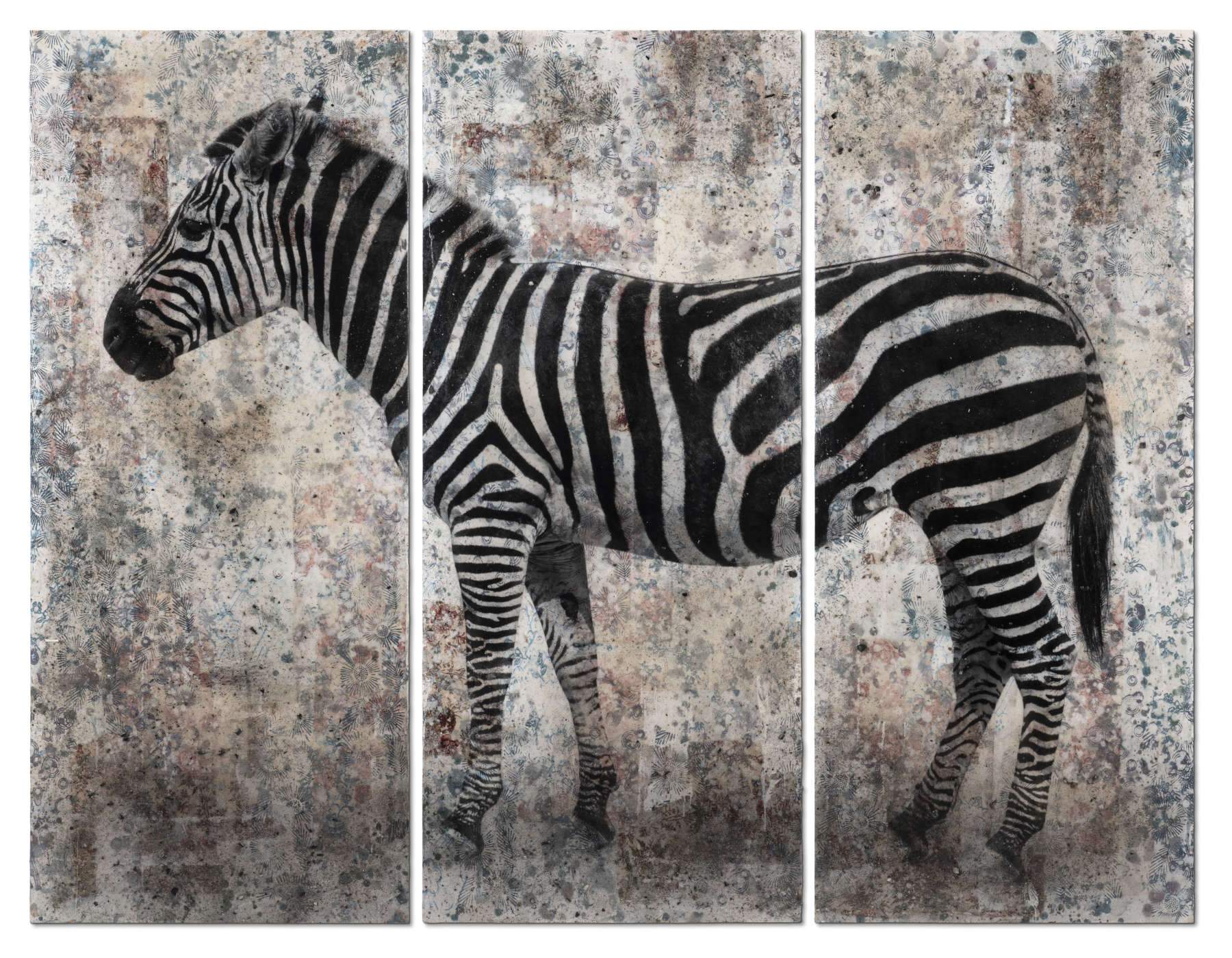Manuel Felisi's animals on display in Rome at Museo Carlo Bilotti
Open until April 21 is Manuel Felisi. 1:1, an exhibition by artist Manuel Felisi, curated by Gabriele Simongini and set up in the spaces of the Museo Carlo Bilotti, in the heart of Villa Borghese. The exhibition is promoted by Roma Capitale, Assessorato alla Cultura, Sovrintendenza Capitolina ai Beni Culturali, produced and organized by Galleria Russo with the support of Gruppo Banca del Fucino, in collaboration with Fondazione Bioparco di Roma and in media partnership with National Geographic Italia. The Carlo Bilotti Museum is the ideal venue to host the artist’s project dedicated to the animal world: a bestiary depicted on large wooden boards placed in dialogue with the nearby Bioparco,Italy’s oldest zoological garden. The collaboration with the Bioparco Foundation of Rome will also allow for live observation of some of the animals portrayed by the artist and protected within it to make it possible to further explore the nature of the species.
1:1 as the title suggests sees 80 life-size works on display, made with the hybrid painting technique - Felisi’s stylistic signature - which has always practiced an art of mixing techniques and languages, traditional ways and technological innovation, finding in versatility the key to his research.
“Felisi/Noah,” writes curator Gabriele Simongini, “brings to the great Ark of painting the image/memory of animals whose existence is often threatened by our insane and pervasive environmental aggression. Suspended between appearance and disappearance, not infrequently transformed into phantasmal presences, the animals stare at us almost incredulously, silhouetted on a full scale against backgrounds that also seem to evoke the refinement of Art Deco and in any case a time that already belongs to the dimension of memory.”
In fact, if in the artist’s works the central iconography are the arboreal and floral forms, symbols of life that praise the power of nature, in the 1:1 exhibition Felisi ventures for the first time into the representation of the animal kingdom, which sees together with two-dimensional works, some works subtracted from static through digital animation obtained with digital art interventions.
“On the large wooden surfaces,” says the artist, “the rollers and gauze, resins and irregular backgrounds that characterize my painting have found fertile ground to create a fantasy world where I immerse my animals.”
The exhibition was born in the artist’s soul during the first lockdown in the spring of 2020. In a dramatic time of Covid and forced stasis, some photos of animals taken by Felisi during a trip to Senegal suggested a reflection on the dangers animal species are facing due to the degradation of their natural habitat. Through the mediation of art, Felisi thus creates the idea of an enchanted garden that can shelter the animals from any insidiousness.
The obvious reference is with thebiblical Ark. Every Ark is made of wood, and the one created by Felisi is no exception, which is why he uses large wooden boards for the works in the exhibition. There is no shortage of references to the Contemporary. In particular, to the Bestiary created by Andrea Pazienza, a collection of drawings, sketches, and illustrations by the well-known cartoonist dedicated to the animal world, and to the creations for children created by Bruno Munari, in which animal forms play a key role.
National Geographic Italia is collaborating with the exhibition by organizing a meeting between Manuel Felisi and Nature Photographer Bruno D’Amicis on Friday 16 at 6 p.m., moderated by curator Gabriele Simongini. The confrontation between the two will lead Felisi to the creation of an unpublished work based on a photo by D’Amicis depicting a large Marsican bear, with the idea of raising public awareness about the conservation of this endangered species also through the specific language of the artist.
Currently in Rome, at theFiumicino Airport in Terminal 1, in tune with the exhibition set up at the Bilotti Museum, two large-scale works by Manuel Felisi entitled Vertigine are on display positioned one in front of the other: a series of grids composed of small canvases go to break down and recompose photographs of trees, portrayed without leaves and stretched toward the sky at two different times during the day, morning and evening. The works testify to the artist’s intent to bring attention - in a place of constant transition - to the world of nature and the preservation of the environment.
The exhibition is accompanied by an extensive catalog published by Gangemi Editore.
Manuel Felisi. Milan 1976. He attended the Liceo Artistico and theBrera Academy of Fine Arts. In his artistic practice he moves between different fields including painting, photography and collage in his works to create installations in which he translates and narrates time. The common thread that binds his production is a subject that concerns all of us, our being and being there, here and now; time with its passing changes things, preserves them and makes us forget them. Felisi uses photography to express a time that immobilizes and measures places, objects, people and feelings; the instant of the photographic shot is no longer a mere mechanical operation but becomes the symbol that binds the different types of time described in the work. His works are composed of layers of different materials that follow the same scientific order, like a ritual that - from painting to printing - is never confused with mechanicity and repetitiveness, as it is always the result of the involvement and feeling that guide his artistic making.
For all information, you can visit the official website of the Carlo Bilotti Museum.
Pictured: Manuel Felisi, Zebra
 |
| Manuel Felisi's animals on display in Rome at Museo Carlo Bilotti |
Warning: the translation into English of the original Italian article was created using automatic tools. We undertake to review all articles, but we do not guarantee the total absence of inaccuracies in the translation due to the program. You can find the original by clicking on the ITA button. If you find any mistake,please contact us.




























